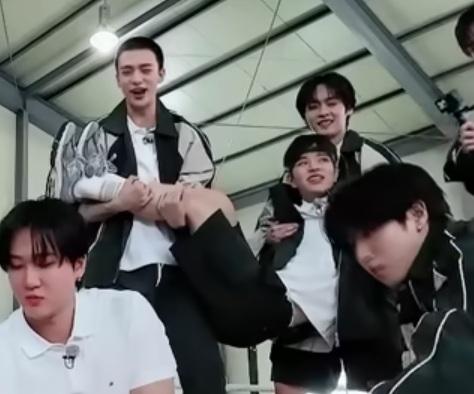The air crackles with a strange intensity, fueled by whispers, hashtags, and the unnerving focus of a global fanbase. It began subtly, a series of seemingly innocuous posts – fervent declarations of love, meticulous tracking of merchandise purchases, and the obsessive documentation of every movement by Stray Kids. But beneath the surface of adoration, something darker has emerged, a chilling preoccupation with individual members, particularly Seungmin and Lee Know.

The “Burberry Puppy” saga, sparked by Seungmin’s casually dropped mention of a campaign, quickly spiraled into a full-blown investigation, fueled by speculation about his spending habits and a growing, almost paranoid, desire to understand his motivations. Add to this the fervent #ChangbinBubble, driven by a theatrical declaration of “Kim Seungmin,” and the unsettling fixation of a sizable portion of the fanbase on his perceived “drama,” and you have a powder keg of obsession.

“Jjangbinnie,” born from a single compliment and a pork belly dinner, has become a sacred mantra, a rallying cry within a subculture of devoted followers. The debates over his origins, his influence, and the carefully cultivated persona, reveal a deep-seated need to categorize and understand the members, to reduce their complex identities to simple, digestible narratives. The intense discussions surrounding Han’s “generosity,” his seemingly chaotic travel habits (documented complete with specifics – the cat toys, the speaker, the lobster-shaped neck pillow), and even the anxiety surrounding potential “bubble” subscription failures, demonstrate a level of investment rarely seen in fandoms.

The collective trauma of witnessing Seungmin nearly ejecting from a highway, almost lost ‘into space’ – “it’s always Seungmin” is a hashtag that now haunts every update– reveals a disturbing tendency to fixate on the potential for chaos and disaster surrounding individual members. The fixation isn’t simply about appreciating talent; it’s about a disturbing need to control, to anticipate, and to actively monitor their every action. This hyper-vigilance, coupled with the shared anxieties about burnout and subscription loyalty, suggests a fandom consumed by a need to protect its idols, even if that protection manifests as obsessive scrutiny.
The online threads are filled with calls for “non-toxic” spaces – attempting to navigate a deeply fragmented and increasingly intense online community, attempting to capture the fleeting moments of connection and shared adoration. This project, driven by the intense competition for the attention of the members themselves, is one of the keys to the unfolding phenomena.
What began as a celebration of talent has morphed into something far more unsettling. In the pursuit of this devotion and this order, the universe of Stray Kids has become an intricate puzzle requiring a relentless, almost desperate, attempt to solve: Is this fandom a testament to artistry, or a chilling reflection of our anxieties and the darkest corners of our own minds?



